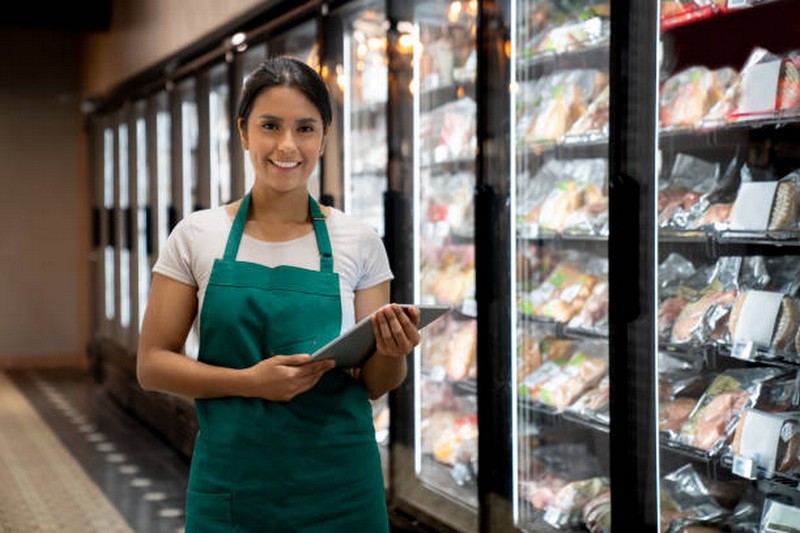In commercial refrigeration, the pursuit of sustainability has sparked a surge of innovation, altering the industrial landscape. As organizations worldwide face growing pressure to decrease their environmental imprint, eco-friendly commercial refrigeration systems have moved from optional to essential. This article digs into the ground-breaking breakthroughs driving the green revolution, demonstrating how technology is being used to improve efficiency, cut emissions, and pave the path for a more sustainable future in commercial refrigeration.
The Need for Eco-Friendly Solutions
Commercial refrigeration systems are vital in a variety of industries, including food service, retail, and healthcare. Historically, these systems were energy-intensive, adding considerably to world energy consumption and greenhouse gas emissions. Climate change concerns and regulatory obligations are driving the sector toward greener options, making the need for eco-friendly products more crucial than ever.
Leading Innovations in Sustainable Commercial Refrigeration
- Natural Refrigerants: One of the most transformative shifts in commercial refrigeration is the move away from synthetic refrigerants, which have high Global Warming Potential (GWP), to natural alternatives like CO2, ammonia, and hydrocarbons. These substances not only minimize environmental impact but often offer improved energy efficiency.
- Advanced Insulation Materials: Modern refrigeration units now incorporate cutting-edge insulation materials that drastically reduce thermal leakage. Vacuum Insulation Panels (VIPs) and Aerogels, for instance, provide superior insulation in thinner profiles, minimizing the energy required to maintain optimal temperatures.
- Energy-Efficient Components: The development of high-efficiency compressors, fans, and lighting has significantly reduced the energy demand of commercial refrigeration units. LED lighting, in particular, has replaced traditional lighting systems, offering better illumination with a fraction of the energy use and heat output.
- Smart Cooling Systems: Integration of Internet of Things (IoT) technology allows for real-time monitoring and control of refrigeration systems. Smart thermostats and predictive maintenance algorithms optimize energy use, reducing waste and preventing costly breakdowns.
- Solar-Powered Refrigeration: Harnessing solar energy to power refrigeration units is a game-changer, especially in remote areas or regions with high solar insolation. This innovation not only curtails reliance on fossil fuels but also ensures refrigeration accessibility without the carbon footprint.
- Heat Recovery Systems: Modern commercial refrigerators can now recycle waste heat generated during the refrigeration cycle. This heat can be used for water heating, space heating, or other processes, thereby reducing energy consumption and maximizing efficiency.
- Eco-Friendly Design and Manufacturing: Beyond technological advancements, there is a growing emphasis on the environmental impact of the manufacturing process and the recyclability of refrigeration units. Sustainable materials, green manufacturing practices, and design for disassembly are becoming standard, reflecting a holistic approach to sustainability.
Advantages of Green Refrigeration
Eco-friendly commercial refrigeration technology provide benefits beyond environmental conservation. Reduced energy usage and operational efficiency save businesses money over time. Companies using green technology frequently improve their brand image, which aligns with environmentally sensitive customers and stakeholders.
Additionally, regulatory compliance drives sustainable refrigeration solutions. Eco-friendly solutions help firms comply with tougher energy efficiency and refrigerant usage requirements globally, avoiding penalties and market limitations.
Overcoming Sustainability Obstacles
Challenges continue as commercial refrigeration moves toward sustainability. Small and medium-sized firms may find eco-friendly solutions more expensive than standard ones. The sector needs personnel educated in green technology to fill a skills deficit.
From producers to end-users, stakeholders must work on education, incentives, and financing methods to help the value chain migrate to eco-friendly refrigeration. Government subsidies, tax incentives, and grants may help cover early investment expenses, while industry-led training can teach technicians the skills they need.
Commercial refrigeration is green as we go forward. Innovation driven by technology and regulation will improve refrigeration system sustainability. Looking forward, artificial intelligence and machine learning may help systems independently optimize their functioning for lowest environmental effect, increasing efficiency.
The commercial refrigeration eco-innovation revolution is a major step toward sustainability. Businesses may decrease their environmental impact, improve operations, and comply with changing regulations by adopting these innovations. The industry’s innovation makes a cooler, greener globe possible, demonstrating technology’s ability to improve the environment.

